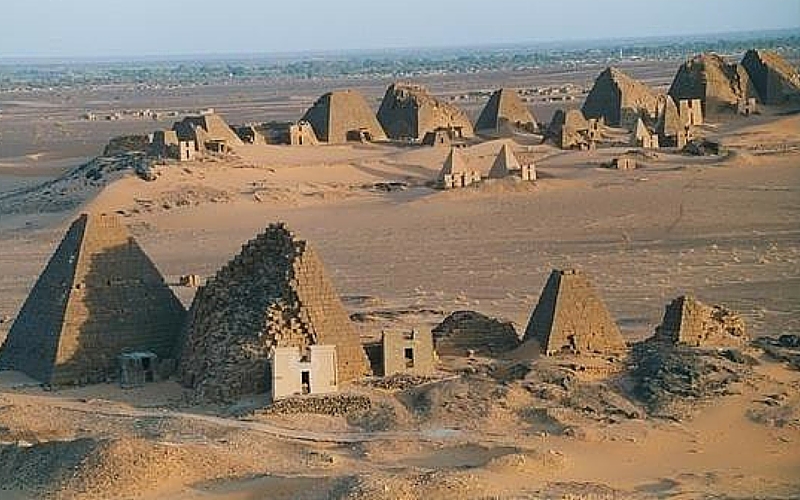The kingdom of Kush had two capitals: Napata and Meroe. Napata became a center for trade in ivory, gold, leopard skins, and ostrich feathers. Meroe was more agricultural with many farmers growing sorghum and millet and owning cattle. After 600 BC Meroe became increasingly more important and eventually the only capital of Kush. Thereafter, the economy of Meroe shifted and iron smelting became common, something not traditionally found in Egypt. The Kush also developed and mass produced painted pottery. Kushites in Meroe traded with Egypt, Arabia, Greece and Rome and the kingdom of Axum, which is present day Ethiopia. Meroe was finally conquered by Axum in 300 AD.

The Meroe pyramids in Sudan are located 200km from the Sudanese capital Khartoum on the east bank of the Nile river near a group of villages called Bagrawiyah. The Meroe pyramids name is derived from the ancient city of Meroe, the capital of the Kingdom of Kush. There are nearly 200 ancient pyramids built as tombs of the kings and queens of the Meroitic Kingdom which ruled the area for more than 900 years.
PRESENT DAY SOUTH SUDAN





One response to “Early History & Economy of the Sudan (1500- 600 BC)”
This is really interesting history.